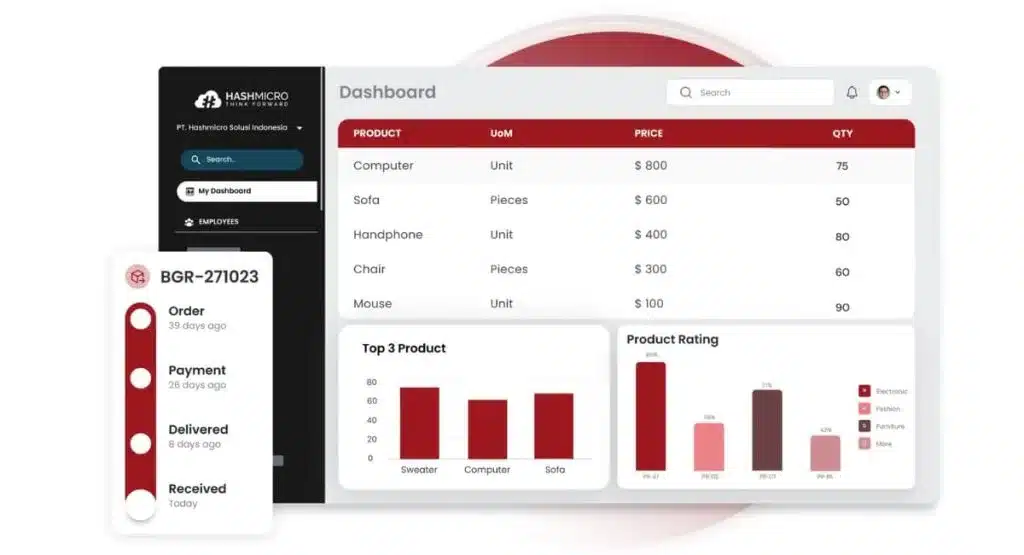Imagine your business running smoothly, every process in place—until a critical supply chain falls apart. Suddenly, you’re out of stock, production halts, and costs spike. How did this happen? Poor procurement strategy.
Procurement isn’t just about buying what you need; it’s about building a foundation that keeps your business resilient and competitive. In the right hands, procurement is a powerhouse for cost savings, risk mitigation, and top-notch supplier relationships.
But without a clear strategy, you risk costly delays, missed opportunities, and weaker supplier partnerships. Want to make procurement work for you instead of against you?
Let’s dive into this guide and unlock tactics to create a procurement strategy that aligns with your goals, secures savings, and builds strong supplier alliances.
Key Takeaways
|
Table of Content
Content Lists
What is a Procurement Strategy?

A procurement strategy is a plan that helps a business get the goods and services it needs to operate. It keeps purchasing on track with your business goals, saves money, improves supplier connections, and ensures timely deliveries.
It includes setting clear objectives, like reducing costs or improving supplier reliability, and choosing tactics that help reach these goals—such as building stronger supplier relationships, negotiating favourable contracts, and tracking the market for the best opportunities.
In other words, a good procurement strategy that is supported by a procurement system is like the backbone of a business. It ensures the company’s needs are met efficiently and economically without compromising on quality or timing. The ultimate aim is to make procurement a strength that supports growth rather than a reactive task.
How to Manage Procurement
Effectively managing procurement is crucial to keeping your organization running smoothly, saving money, and building solid supplier relationships. Procurement isn’t just about making purchases. It’s about taking a structured, proactive approach that keeps every decision in line with your organization’s goals.
Here’s a practical way to handle procurement effectively:
- Identify Procurement Needs: Begin by developing a procurement plan that aligns with the organization’s broader business strategy. This plan should clearly outline the procurement process and manage delivery logistics.
- Establish Procurement Policies and Procedures: Create clear guidelines that define roles and responsibilities, set procurement thresholds, and outline approval processes that meet legal and regulatory standards.
- Implement e-Procurement Technology: Use the right tools and software to streamline procurement tasks, making the process more efficient and allowing for better control and tracking of purchases.
- Measure and Evaluate Performance: Regularly review and assess procurement activities to pinpoint areas for improvement and confirm adherence to established policies and procedures.
By consistently following these steps, organizations can streamline procurement management, drive cost savings, build stronger supplier relationships, and reduce the variance in purchase prices.

5 Steps to Better Procurement Strategy
Implementing effective procurement strategies is essential to ensure the procurement process aligns with the organization’s goals and objectives. The following strategies can help organizations reduce costs, minimize risk, and improve supplier relationships:
1. Make procurement faster and more reliable
Working closely with suppliers, internal teams, and partners keeps the procurement process smooth and efficient. This approach cuts delays, strengthens supplier relationships, and ensures you get what you need on time. A more connected process also makes it easier to handle any surprises along the way.
2. Reduce supplier risks early
Spotting and managing supplier risks early prevents issues from becoming big problems. Regularly checking on suppliers helps catch potential issues before they disrupt your operations. This approach keeps your supply chain steady and ready for anything.
3. Keep supplier info all in one place
Centralizing supplier information in one place makes it easier to manage relationships and make quick decisions. With all the data accessible, teams reduce errors and improve communication with suppliers. This setup leads to smoother, more organized operations.
4. Use data to plan ahead
Predictive analytics helps you prepare for future supply needs and price changes. By analyzing past data, you can anticipate stock levels and avoid shortages, keeping costs down. This data-driven approach gives you confidence in every procurement decision.
5. Build a culture of teamwork and innovation
Encouraging collaboration and fresh ideas in procurement opens up ways to improve quality and cut costs. When teams and suppliers work together, they find ways to streamline and innovate. This culture makes procurement a driver of growth and adaptability.
Optimize Your Procurement Strategy with HashMicro’s Procurement Software

Optimizing your procurement strategy is essential for aligning purchasing activities with your organization’s goals. Implementing a robust procurement system, like HashMicro’s Procurement Software, can significantly enhance this process.
Procurement software offers real-time data access, automates procurement tasks, and fosters better collaboration with suppliers and internal teams, leading to more informed decision-making and streamlined operations.
Some features of HashMicro’s Procurement Software:
- Purchase Order (PO), Request for Quotation (RFQ), and Purchase Request (PR) Management: Easily generate purchase requests and convert them into purchase orders. Create and send quotations to multiple suppliers efficiently.
- Purchase Request Approval Management: Approve or disapprove purchase requests from all departments, locations, or employees with just one click, minimizing unauthorized purchases.
- Online Portal for Suppliers: Vendors can share digital catalogues through the vendor portal, facilitating a seamless tender process to secure the best offers.
- Vendor/Supplier Rating: Evaluate vendors or suppliers by analyzing their performance based on product quality, services, lead time, prices, and more.
- Blanket Order Management: Place orders using a blanket PO according to agreed-upon prices and schedules with suppliers, and automate recurring orders.
- Landed Cost Calculation: Determine the total cost of items upon arrival, including taxes, shipping costs, insurance, and currency conversion.
By leveraging these features, HashMicro’s Procurement Software enables organizations to develop and implement procurement strategies that are efficient, cost-effective, and aligned with their objectives.
Conclusion
In summary, a strong procurement strategy is essential for maintaining steady operations, reducing costs, and strengthening supplier relationships. HashMicro’s Procurement Software provides the tools needed to easily manage these processes, making procurement management smoother and more effective.
HashMicro’s software empowers companies to reduce risks, improve communication, and build a culture of collaboration and innovation within procurement. By leveraging these tools, your organization can achieve procurement goals more easily and effectively. Try the free demo today!

FAQ Around Procurement Strategy
-
What is an example of strategic procurement?
Strategic procurement includes selecting suppliers that align with business goals, like sustainable sourcing. This approach improves supplier relationships, reduces costs, and supports company values.
-
How to build a successful procurement strategy?
Start by defining clear goals, assessing suppliers, and using data for informed decisions. Regularly review and adjust the strategy to keep it aligned with changing business needs.
-
What is the procurement strategy model?
A procurement strategy model outlines the methods to achieve purchasing goals, like cost reduction or risk management. Common models include cost-focused, quality-focused, and supplier relationship-based approaches.




































